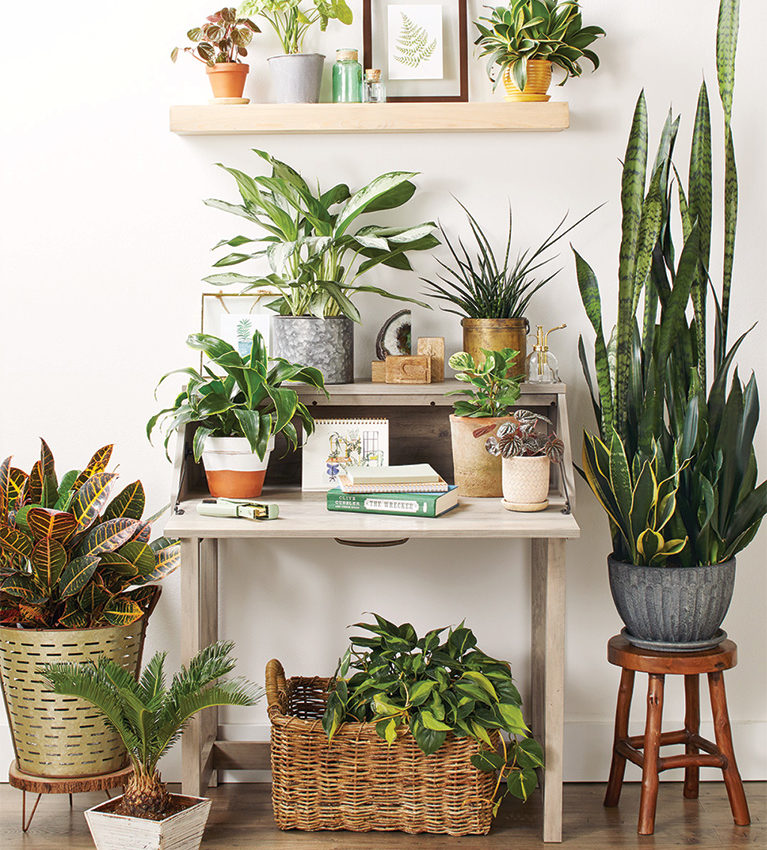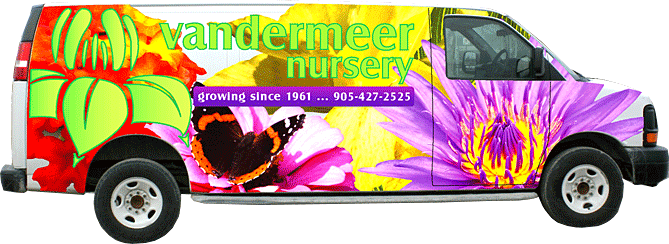HOUSEPLANTS
HOUSEPLANTS 101
While houseplants can be a little intimidating at first, with some basic knowledge you could have an urban jungle in no time!
Most plant care information is based solely on the type of plant that is being discussed, giving the impression that care is exclusively specific to each species or variety. While different plants and their care preferences can vary immensely, a few different factors are the basis for a happy, healthy plant. It is generally safe to say that the best care for a plant is one that replicates its native environment as closely as possible. With a basic understanding of plant systems, good observation skills, and google to determine native ranges, care considerations can be broadened and are based on two core, interdependent factors: light and water.
Other factors are still extremely important, but if light and water conditions are not ideal, your plants will not thrive. It is incredibly important to note that almost all factors are relative to each other. Changes in light, humidity, or heat as the seasons change will affect the amount of water and nutrients the plant will consume for photosynthesis. For the intents of this article, plants that are native to the humid tropics are referred to as tropicals, while desert-loving plants are referred to as cacti and succulents.
Light
In the houseplant world, natural light can be divided into two types: direct and indirect. Direct sunlight means plant has a direct view of the sun itself, while indirect is when the plant can see the sky but not the sun. This is a situation where you can consider the native home of the plant to determine whether it would prefer direct or indirect light; cacti and succulents are direct sun-lovers, while most tropical plants prefer indirect light.
It’s not just the type of light that matters, but the amount as well. In simple terms, the amount of indirect light that your plant receives can be classified into low light, medium light, and bright light. The more of the sky that your plant sees, the higher amount of light it is considered to get. When purchasing a plant, look for a label that specifies what type of light it prefers and consider whether that will suit the space you’re thinking of. Don’t forget that the size and number of windows in the room, the direction the windows face, and the distance of the plant to the window affects the amount of light the plant will receive. It is also important to remember that just because a label says that plant will tolerate that amount of light, does not mean it will thrive in it – a plant that says “low-light tolerant” will grow better in brighter light, but will not die with less.
If you are limited in the amount of natural light your space receives, you can also consider adding artificial light to supplement it. This works especially well if you have your eye on a certain plant that does not suit the spot you have. With many improvements in the types of grow lights you can get, there is sure to be something that will work for you. The easiest method is to purchase a light bulb that is designed for aiding in plant growth and substitute it in a nearby lamp you already have. This way style or space is not compromised and the investment does not have to be substantial. If you are looking to replace natural light altogether, a more considerable investment and setup would be required.
Water
Water is another incredibly important factor when it comes to the care of your new plant baby. While we would love for watering frequency to come with a simple formula, it never quite works that way. We all understand that different plants have different preferences for how much water is in the soil, but there are a number of other factors that significantly affect watering frequency. This includes heat, humidity, the amount and type of light that plant receives, and plant dormancy periods, and these factors typically change between seasons (even if your plant stays in the same spot).
While this can all sound a little intimidating, watering your plants isn’t rocket science. Knowing when to water your plant has a lot to do with observation. Many plants will give you visible signs that they need to be watered such as wilting, shrivelling, or developing significant browning edges. There are three general watering preferences that almost all houseplants are categorized by: 1) let the soil dry out entirely, 2) let the top 1-2 inches of soil dry out, and 3) keep moist. Cacti and succulents fall into the first category, while most tropicals fall into the second two depending on the species of plant. This is a very general guide so you should always check the watering preferences of your specific plant. Don’t forget that in the colder months, your watering schedule will most likely be reduced due to lack of sun, colder temperatures, and the plant’s dormancy period.
Soil
The soil that your plant is in does a few different jobs; it acts as an anchor to hold your plant upright, while providing the water and nutrients that your plant needs to survive. Although it is commonly referred to as soil, most potting mediums that are available do not actually contain any soil. Instead, they are a mixture of organic and inorganic matter, and often supplemented with fertilizer.
The base for most potting mediums is peat moss, which is a light, spongy material harvested from peat bogs, and the result of organic matter decaying over thousands of years. It provides adequate drainage while retaining enough moisture to support the plant. Sand, vermiculite, or perlite are often added to the mix to increase drainage and ensure that the roots won’t be sitting in too much water. The type of additive and the ratio in which it is added is based on the category of plants that the soil is created for. For example, cacti and succulents always prefer a sandier mix that tropical foliage.

Aeration is another important matter when it comes to the soil mass that your plant is in. Believe it or not, roots actually need air too, despite being underground. This is possible because there a little air pockets within the potting medium. Most mediums provide enough air to the root systems right off the bat, but if you find that over the course of owning your plant for a year, the soil becomes denser, you can aerate the soil yourself using a small wood skewer, chopstick, or something else of that nature. Just push the skewer into the soil until you reach the bottom in various places around the pot. This should be done every 6-12 months, or as necessary based on your observations.
Fertilizer
While most potting mediums will contain a fertilizer of some sort, eventually you should be fertilizing your plant to support and encourage more growth. Typically, we recommend after the first year, you can begin to supplement with a liquid fertilizer during the growing season. Pick a fertilizer that is specifically developed for your type of plant. In most places, you can find separate fertilizer for tropicals, and cacti and succulents, though sometimes you can find specialized fertilizers for plants like orchids, and bonsais. It is important to get the quantity and frequency right, as over fertilizing can cause more harm. Always follow the directions on the packaging as that is specific for the formulation of that fertilizer.
Picking the right plant for your space
The most important decision you can make is picking the right plant for you space and care abilities. Now that you have a better understanding of all the factors that go into plant care, consider where you want to put your plant, how much light it gets in that place, and how frequently are you going to be able to water. Are you the type of person to integrate water into your daily routine or will you forget to water for 4 weeks? There’s a plant for both situations, you just have to pick the one that’s going to succeed for you!




